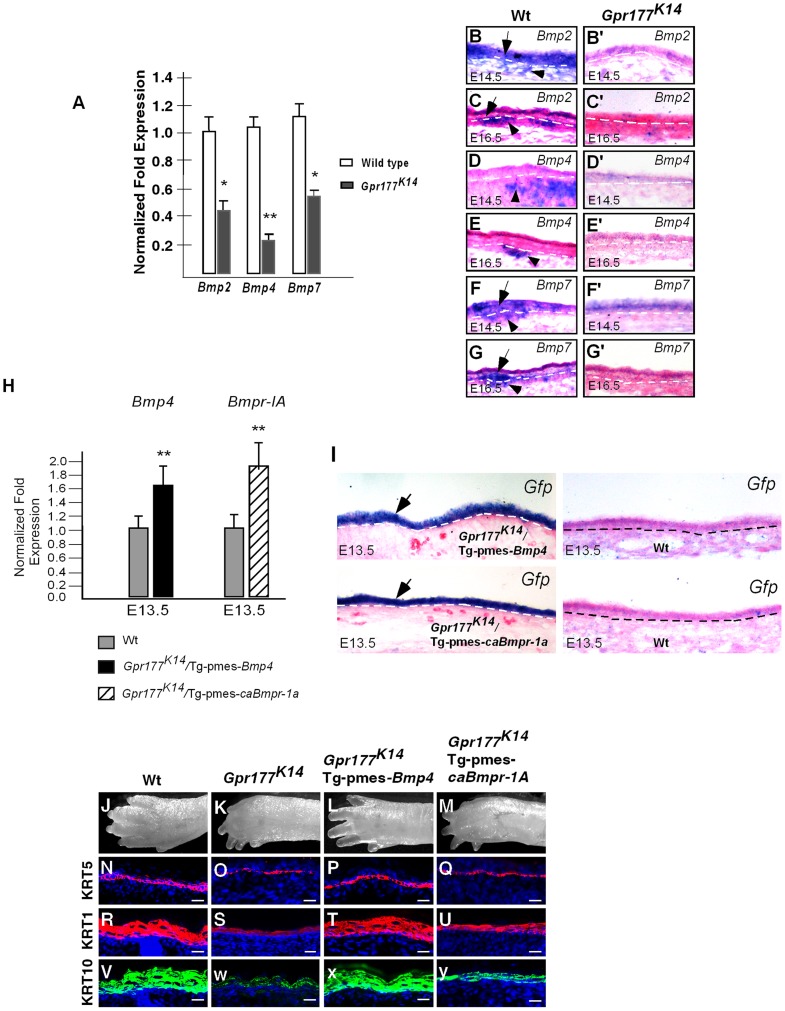Figure 3. Expression of Bmps requires epidermal Gpr177 and rescue of defective limbs and epidermal stratification in Gpr177K14 mutants by activation of a transgenic Bmp4 allele.
(A)Real-time PCR shows the down-regulation of Bmps in skin of Gpr177K14 mutants at E16.5. *,P<0.05; **, P<0.01, compared with Wt. Data are represented as mean ±SD and are representatives of at least three independent experiments. (B–G, B′–G′) In situ hybridization reveals the reduced transcripts of Bmp2, Bmp4, and Bmp7 in epidermis (arrows) and dermis (arrowheads) of Gpr177K14 embryonic limb skin at E14.5 and E16.5, as compared to wild type controls. (H) Quantitative real-time RT-PCR indicates that mRNA levels of Bmp4 and Bmp1a in the autopod skin are enhanced in transgenic animals, compared to wild type controls. Data are represented as mean ± SD (n = 3). *, P<0.05, compared with wild type controls. (I) In situ hybridization on Egfp mRNA reveals epidermal-specific expression of transgenes in Gpr177K14/Tg-pmes-Bmp4 and Gpr177K14/Tg-pmes-caBmpr1a. (J-M) Morphologic defect of autopods in Gpr177K14 mice is partially rescued in Gpr177K14/Tg-pmes-Bmp4 mice (J, K, L), but not in Gpr177K14/Tg-pmes-Bmpr1a mice (J, K, M). (N–Y) Immunohistochemistry reveals expressions of KRT5 for basal layer (N–Q), KRT1 and KRT10 for spinous keratinocytes (R–Y). Note that the rescued thickness of spinous layer in Gpr177K14/Tg-pmes-Bmp4 (T and X) was comparable to wild type controls (R and V), but not in Gpr177K14/Tg-pmes-Bmpr-1a mice (U and V). Bars: 10 µm.

